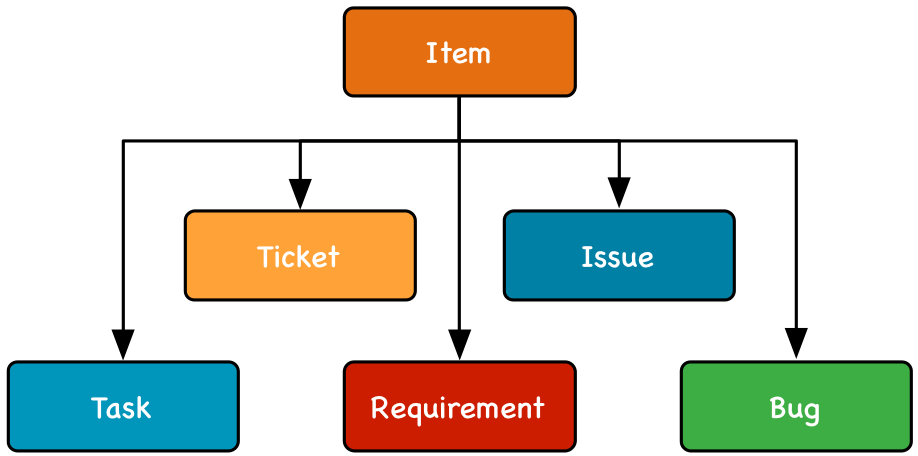Items and Workspaces¶
In Allegra, you can easily manage items in workspaces. All items have a type, such as “Milestone”, “Error message” or “Action item”. For each item type, you can configure custom input screens, permissions, and workflows.
Items are always in exactly one state, such as “open”, “in process”, or “completed”.
An item always belongs to exactly one workspace.
Workspaces can be, for example, projects, locations, product groups, or organizational workspaces, and are used to control access to items. Workspaces can contain sub-workspaces and you can structure them hierarchically. This feature, together with the ability to structure items in any depth hierarchical structure, distinguishes Allegra from many other similar systems and is the basis for its enormous functionality.
What you can do with an item within a workspace is defined by the roles you have for that workspace. The roles you have in parent workspaces apply to all child workspaces as well.
You can have several roles in one workspace, and you can have different roles in different workspaces.
In addition to the global assignment of items to workspaces, you can also personally assign people to tasks. This personal assignment is based on David Allen’s Getting Things Done principle.
